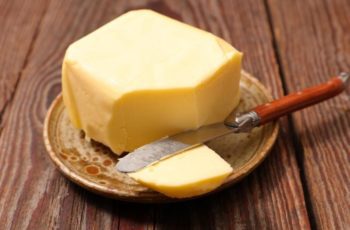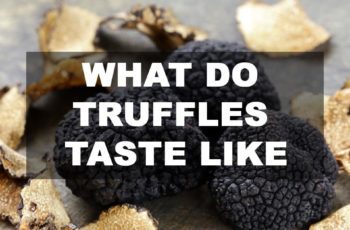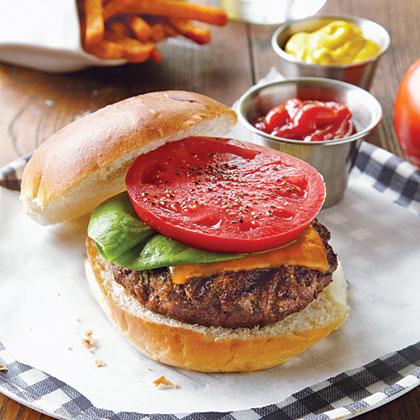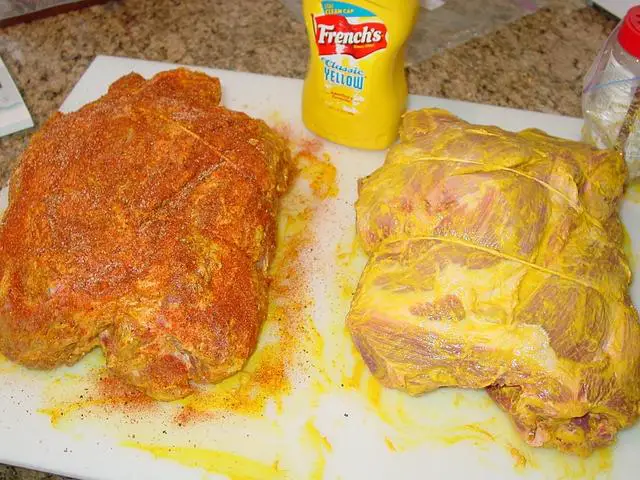
“Enhance the Flavor: Unleash the Perfect Pairing of Mustard on Pork Butt for Mouthwatering Delights!”
Mustard on Pork Butt: Why it’s Used and 6 Alternatives
One of the main reasons people use mustard on pork butt is to help the dry rub stick better to the meat. Mustard acts as a binder, creating a tacky surface that allows the dry ingredients to adhere more easily. This results in a better bark and enhances the flavor of the meat. Mustard is popular because it is vinegar-based, readily available, and affordable.
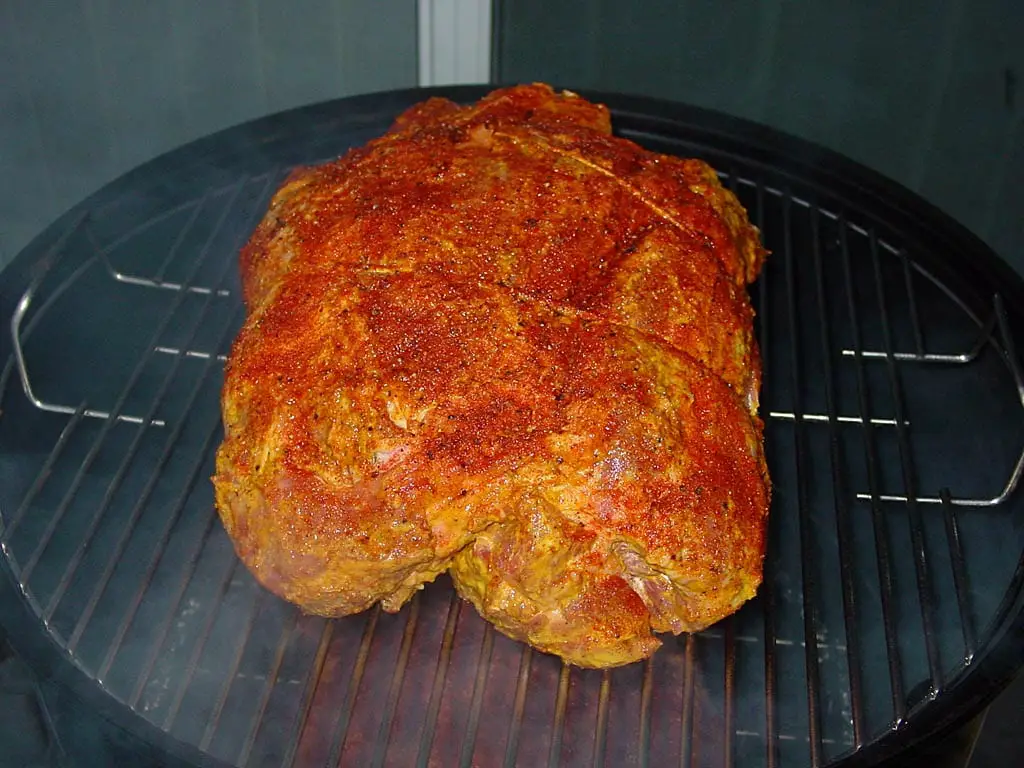
While mustard is the most commonly used binder for pork butt, there are several alternatives that can also be effective. Hot sauce, such as Frank’s Red Hot, can serve as a binder and add a spicy kick to the meat. Worcestershire sauce, although more commonly used with beef cuts, can also be used as a binder for pork butt. Cooking oils like olive oil or vegetable oil can provide moisture and help the dry rub adhere to the meat. Apple juice or apple cider vinegar, often used in liquid wraps or spritzes, can also be used as a binder for added flavor. Mayonnaise is another option that some people use as a binder for beef cuts.
It’s important to note that these binders do not significantly impact the taste of the final product. The liquid ingredients in most binders vaporize during cooking, leaving behind only small quantities of soluble ingredients from the binders. Ultimately, it is up to personal preference whether or not to use a binder when smoking pork butt.
Why is Mustard Used on Pork Butt?

One of the main reasons people use mustard on pork butt is to help the dry rub stick better to the meat. The mustard acts as a binder, slather, or schmear, helping to hold the dry ingredients onto the pork butt during cooking. Additionally, the mustard layer can contribute to creating a better bark on the meat.
Mustard is popular as a binder for pork butt because it is vinegar-based, affordable, and commonly found in most households’ refrigerators. Its vinegar content helps break down the proteins in the meat, making it more tender. Moreover, since pork butt has an irregular shape and thickness compared to cuts like brisket or ribs, using a wet/tacky surface like mustard makes it easier to apply the dry rub evenly.
While mustard is commonly used as a binder for pork butt, there are several alternatives that can serve the same purpose. These alternatives include:
- Hot Sauce: Hot sauce is another popular and affordable option for binding the dry rub to pork butt. It adds some spiciness without significantly impacting the flavor of the meat.
- Worcestershire Sauce: While more commonly used with beef cuts, Worcestershire sauce can also be used as a binder for pork butt. It enhances the “beefy” flavors and brings some sweet and spicy notes.
- Cooking Oils: Various cooking oils like olive oil, vegetable oil, or canola oil can be used as binders for pork butt. They provide moisture and help create a flavorful crust on the meat.
- Apple Juice/Apple Cider Vinegar: Both apple juice and apple cider vinegar are commonly used with pork cuts. They can be used as binders for pork butt, adding some sweetness and tanginess to the flavor profile.
- Mayonnaise: Although less common, mayonnaise can also be used as a binder for pork butt. It adds richness and moisture to the meat, particularly popular with beef cuts.
It’s important to note that these alternatives, like mustard, do not significantly affect the taste of the final dish. The liquid ingredients in these binders vaporize during cooking, leaving behind only small quantities of soluble ingredients that do not impart noticeable flavors.
My Personal Opinions on Mustard with Pork Butt
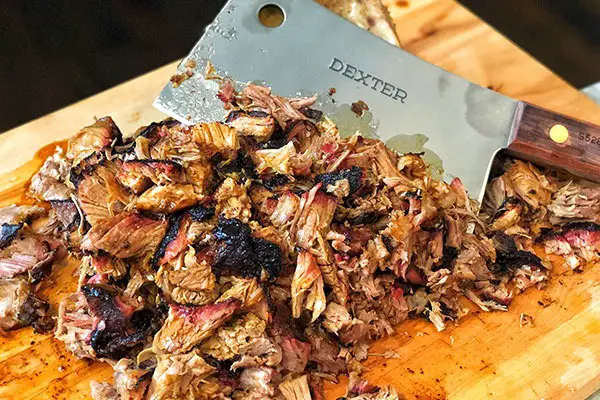
In my personal experience, using mustard as a binder for pork butt has been effective in helping the dry rub stick to the meat. The mustard creates a wet and tacky surface that makes it easier to apply the dry rub evenly. I have found that this is especially helpful with pork butt, which can have an irregular shape and thick layers of fat. The mustard does not impart any noticeable flavor to the meat once it is cooked.
While mustard is a popular and affordable option for a binder, there are also alternatives available. Hot sauce, such as Frank’s Red Hot, can be used as a binder for pork butt and adds a spicy element to the flavor profile. Worcestershire sauce is more commonly used with beef cuts but can also function as a binder for pork. Cooking oils like olive oil or vegetable oil are commonly used binders for various cuts of meat but may not add much flavor.
Apple juice or apple cider vinegar are often used in liquid wraps or spritzes during smoking and can also be used as a binder for pork butt. Mayonnaise is another option that some people use as a binder, although it is more common with beef cuts.
Commercial Mustard Ingredients
Almost all yellow mustard is made from a combination of the same ingredients: water, vinegar, and mustard seed. For example, one of the most popular brands of Yellow mustard is French’s. Their ingredients list:
– Distilled Vinegar
– Water
– #1 Grade Mustard Seed
– Salt
– Turmeric
– Paprika
– Spice
– Natural Flavors
Above I’ve bolded the liquid ingredients found in both brands of mustards – which make up most of the mustard in the bottle. When these ingredients are “cooked” they vaporize. The boiling point of water is 212F and the boiling point of vinegar is 213F. Meaning, we’re left behind with soluble ingredients like mustard seed, salt, turmeric, paprika, etc. Almost all of these ingredients are found in barbecue dry rubs. Meaning, when you apply a dry rub, the mustard is indistinguishable from the rub.
The Cost of Yellow Mustard
Yellow mustard is a popular binder for pork butt and other cuts of meat in barbecue cooking. It is affordable and readily available, making it a convenient choice for many people. One of the most popular brands of yellow mustard is French’s, which costs $1.97 for a 20 oz. bottle. Another brand, Heinz, offers an 8 oz. bottle of yellow mustard for $1.38.
Using mustard as a binder provides a wet and tacky surface that helps the dry rub stick to the meat better. However, when cooked, the mustard imparts no flavor that can be tasted. This makes it suitable for those who prefer not to add any additional flavors to their meat.
In comparison to other binders like olive oil, yellow mustard is significantly cheaper. A bottle of California Olive Ranch Olive Oil, which is commonly used in cooking, costs $6.48 for a 16.9 fl. oz bottle. Therefore, if cost is a concern, yellow mustard is a cost-effective option for binding dry rubs to pork butt and other meats during barbecue cooking.

Alternatives to a Mustard Binder for Pork Shoulder
1. Hot sauce: Hot sauce, like Frank’s Red Hot, is a popular alternative to mustard as a binder for pork shoulder. It is affordable and adds a tangy flavor to the meat.
2. Worcestershire sauce: While Worcestershire sauce is more commonly used for beef, it can also be used as a binder for pork shoulder. It brings out the savory flavors of the meat.
3. Cooking oils: Olive oil, vegetable oil, or canola oil can be used as binders for pork shoulder. They provide moisture to the meat and help the dry rub stick better.
4. Apple juice or apple cider vinegar: Both apple juice and apple cider vinegar are commonly used in liquid wraps or spritzes for pork shoulder. They can also be used as binders to add sweetness and enhance the flavor of the meat.
5. Mayonnaise: Mayonnaise is another option as a binder for pork shoulder, although it is more commonly used with beef cuts. It adds moisture to the meat and helps the dry rub adhere.
Remember that most of these alternatives do not impart a noticeable flavor on the meat, so choose based on your preference and availability.
1. Water or No-binder
1. Water or No-binder:
Using water as a binder is a simple and cost-effective option. Since a dry rub is dehydrated, re-hydrating the spices with water provides something for the rub to stick to. This method works well for various cuts of meat, including pork butt. However, it’s important to note that not all people have access to clean drinking water, making mustard a great alternative in these circumstances. Additionally, some prefer not to use any binder at all and rely solely on the dry rub for flavor.
2. Hot Sauce:
Hot sauce is another common binder option, especially for pork cuts like pork butt. Frank’s Red Hot is a popular brand that adds spicy notes to the meat when used as a binder. However, it’s worth mentioning that there may not be enough aged cayenne peppers in the hot sauce to impart a noticeable spiciness.
3. Worcestershire Sauce:
While Worcestershire sauce is more commonly used as a binder for beef cuts, it can also be used for pork. The idea behind using Worcestershire sauce as a binder is to enhance the “beefy” flavors of the meat. However, similar to other binders, most of the liquid ingredients in Worcestershire sauce will vaporize during cooking and won’t contribute much taste.
4. Cooking Oils:
Cooking oils like olive oil, vegetable oil, or canola oil are commonly used as binders for various cuts of meat, including pork butt and ribs. These oils provide moisture and help the dry rub adhere to the meat surface. However, when it comes to flavor enhancement, cooking oils don’t do much.
5. Apple Juice or Apple Cider Vinegar (ACV):
Both apple juice and ACV are frequently used with pork cuts in liquid wraps or spritzes during smoking. These liquids can also serve as binders when applied before adding the dry rub. However, similar to other binders, their taste contribution is minimal.
6. Mayonnaise:
Mayonnaise, although more commonly used with beef cuts, can also be used as a binder for pork butt or other meats. It provides moisture and helps the dry rub stick to the meat’s surface. However, like other binders, it doesn’t significantly affect the taste of the final product.
In summary, while mustard remains the most popular binder for pork butt in barbecue cooking due to its vinegar base, affordability, and easy availability, there are several alternatives that can be used. Ultimately, the choice of binder depends on personal preference and availability of ingredients.
2. Hot Sauce
Hot sauce is a common alternative binder for pork cuts, including pork butt. It is also very affordable, making it a popular choice among barbecue enthusiasts. One popular brand of hot sauce is Frank’s Red Hot, which costs $2.98 for a 12 fl.oz. bottle. However, it’s important to note that the vinegar and water in hot sauce will vaporize when cooked, leaving behind only spicy notes from the aged cayenne peppers. Therefore, if you’re looking for a spicy flavor component, there might not be enough aged cayenne to be tasted.
While Worcestershire sauce is more commonly used for cuts of beef, some people do use it as a binder for pork cuts as well. The idea behind using Worcestershire sauce is that it brings out the “beefy” flavors in the meat. The cost of Worcestershire sauce varies depending on the brand and size of the bottle, but one popular brand, Lea and Perrin’s, costs $4.28 for a 10 oz. bottle.
Cooking oils like olive oil, vegetable oil, or canola oil are commonly used as binders for various cuts of meat, including pork butt and ribs. Olive oil is particularly popular because many households have it on hand for all-purpose cooking purposes. The cost of cooking oils varies depending on the brand and type of oil chosen. For example, Saratoga’s Meyer Lemon Olive Oil costs $19.95 for a 12.6 oz bottle.
Both apple juice and apple cider vinegar are frequently used with pork cuts in different ways – either as part of a liquid wrap or as a spritz during the smoking process. If you use apple juice or ACV in your cooking, you can also use it as a binder for pork butt. The cost of apple juice and ACV varies depending on the brand and quantity purchased.
Mayonnaise is another alternative binder that some people use, although it is more commonly used with beef cuts. Brands like Hellmann’s offer basic mayonnaise, but there are also variations available that include additional ingredients like chipotle. Mayonnaise can be used as a binder for pork butt, but its impact on flavor is minimal. The cost of mayonnaise varies depending on the brand and size of the bottle.
Overall, while mustard is the most popular binder for pork butt in barbecue, there are several alternatives available that can serve the same purpose. These alternatives include hot sauce, Worcestershire sauce, cooking oils, apple juice/ACV, and mayonnaise. It’s important to note that these binders do not significantly affect the taste of the meat and are primarily used to help the dry rub stick to irregularly shaped cuts like pork butt.
3. Worcestershire Sauce
3. Worcestershire Sauce
Worcestershire sauce is not commonly used as a binder for pork cuts, but it is more popularly used with beef cuts. The idea behind using Worcestershire sauce is to bring out the “beefy” flavors in the meat, similar to injecting with beef broth or stock. However, when using Worcestershire sauce as a binder, the liquid ingredients such as water and distilled white vinegar will vaporize during cooking, leaving behind only sweet and spicy notes that are not strong enough to be tasted.
In terms of cost, a 10 oz. bottle of Worcestershire sauce, such as Lea and Perrin’s, costs $4.28, which is double the price of mustard. While Worcestershire sauce can be used as an alternative binder for pork butt, its flavor contribution is minimal and it may not be worth the higher cost compared to other options like mustard or hot sauce.
4. Cooking Oils
Cooking oils, such as olive oil, vegetable oil, and canola oil, are commonly used as binders for various cuts of meat, including beef brisket, pork butt, and ribs. These oils are most popularly used with chicken. Many households keep olive oil on hand for all-purpose cooking. While cooking oils can be used as binders, they do not contribute much to the flavor of the meat. It is important to note that using expensive olive oil for inexpensive meats may not be a wise choice.
5. Apple Juice or Apple Cider Vinegar
5. Apple Juice or Apple Cider Vinegar
Apple juice and apple cider vinegar are both commonly used with pork cuts. Many people use apple juice or ACV in their liquid wraps to beat the stall during smoking. Additionally, a 50/50 mixture of ACV/apple juice and water is often used as a spritz during the smoking process.
If you are someone who uses apple juice or ACV in a wrap or for a spritz, you can also use it as a binder for your pork butt. The flavors from the apple juice or ACV will not be strong enough to be tasted, but they can help create a wet surface for the dry rub to adhere to.
It’s worth noting that while these alternatives can serve as binders, they do not significantly impact the taste of the pork butt. The majority of flavor comes from the rub itself and other cooking techniques.
6. Mayonnaise
Mayonnaise is another alternative binder that some people use for pork cuts, although it is more commonly used with beef cuts. Popular brands like Hellmann’s offer a neutral flavor that doesn’t overpower the meat. While I personally haven’t used mayonnaise as a binder, it is an option that some barbecue enthusiasts swear by. Additionally, there are variations of mayonnaise available with added ingredients like chipotle for those looking to add a unique flavor to their meat. However, it’s important to note that the taste of the binder plays a small role in the overall flavor of the cooked meat, as most of the taste components come from the rub itself.
Final Thoughts
In conclusion, using mustard as a binder for pork butt is a popular choice among barbecue enthusiasts because it helps the dry rub stick to the meat and create a better bark. Mustard is widely available and affordable, making it convenient for many home cooks. However, there are several alternatives to mustard that can also be used as binders for pork shoulder.
Hot sauce, such as Frank’s Red Hot, is another common binder option for pork cuts. Worcestershire sauce, although more commonly used with beef, can also be used as a binder. Cooking oils like olive oil or vegetable oil are often used with various cuts of meat, including pork butt. Apple juice and apple cider vinegar are frequently used in liquid wraps or spritzes during the smoking process and can also serve as binders.
While these alternative binders may not impart much flavor to the meat when cooked, they can still provide a wet surface that makes applying dry rub easier. Ultimately, the choice of binder depends on personal preference and availability of ingredients. Regardless of the binder chosen, it is important to note that the flavor components in a long cooking process like smoking primarily come from the rub rather than the binder itself.
In summary, adding mustard to pork butt before cooking can enhance its flavor, tenderize the meat, and create a delicious crust. The acidity in mustard helps break down proteins while locking in moisture, resulting in a moist and flavorful final dish. So next time you’re preparing pork butt, don’t forget the mustard for an extra layer of deliciousness!
Learn More About Grilling
If you want to learn more about grilling, check out these other helpful resources!




